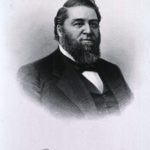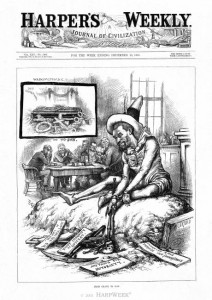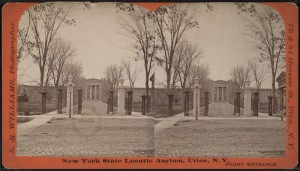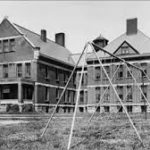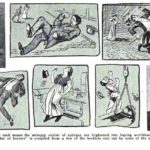Though attendants and nurses bore the brunt of patient violence (see last post), no one on staff at an insane asylum was truly immune. On March 16, 1882, the superintendent of Utica Insane Asylum, John P. Gray, sat in his office with two staff members and his son. Henry Remshaw, who had made threats against the doctor several weeks before the shooting, walked in and shot Gray through the upper jaw. Remshaw fled to his home and bragged about his deed to the woman who lived below him, and then went to the local jail to give himself up.
According to the Albany Times, Remshaw brought in two revolvers, a loaded four barrel repeater, a loaded derringer, a heavy knife, twenty-one packages of 44-calibre cartridges (six to a package), two cases of larger cartridges, a bottle of acetic acid, and opium, when he turned himself in. Remshaw declared that he was an ambassador sent from heaven “to kill Dr. Gray as a friend of the insane.” Because of other references to current events and personalities, it is likely that Remshaw hated Gray for testifying against President Garfield’s assassin, Charles Guiteau. Gray had testified that he did not consider Guiteau insane. Though Remshaw was not a patient at Utica, Gray’s eminence as a mental health expert and status as a superintendent put him in a spotlight that likely contributed to the event.
Dr. Harry Hummer, superintendent at the Canton Asylum for Insane Indians, made a veiled reference to this incident when he made a case for the dismissal of an employee with whom he’d had a confrontation. The employee was not dismissed, but was instead transferred to another position within the Indian Service.
